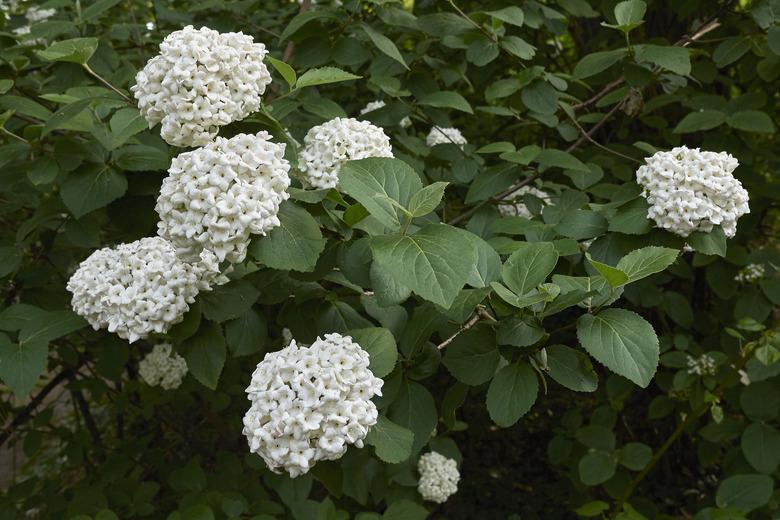Flowers That Look Like Hydrangeas
Small white or brightly colored hydrangea blossoms (Hydrangea spp.) form dense bunches of domed and cone-shaped terminal flower heads. Other showy blooms mimic the appearance and contour of hydrangea corymbs, or clusters, providing alternatives for your yard. All parts of hydrangeas are toxic and may cause stomach upset if eaten.
White Flower Heads Like Hydrangeas
White Flower Heads Like Hydrangeas
In late spring, yellowish-green flower heads grow to 8 inches across and eventually turn pure white on the Chinese snowball shrub (Viburnum macrocephalum), which somewhat resembles a hydrangea. It prefers full sun or partial shade and moist, fertile, well-draining soil with protection from frigid, dry winds. Use Chinese snowball shrub in garden beds and along borders in U.S. Department of Agriculture plant hardiness zones 7 through 9.
Abundant snowy white flower heads, up to 2 inches across, emerge on the spirea shrub (Spiraea cantoniensis) in spring. It grows well in sun or partial shade, and adapts to diverse soil types. Grow it as a specimen, in a small group or along a mixed border in USDA zones 5 through 9. Hydrangeas grow in USDA zones 3 through 9, depending on type and species.
Red Flower Clusters Like Hydrangeas
Red Flower Clusters Like Hydrangeas
Ixora (Ixora coccinea) has thick, round 5-inch clusters of tiny, tube-shaped, scarlet blossoms throughout most of the year. The ixora shrub bears more flowers when planted in full sun but also grow well in partial shade and high humidity. Ixora prefers moist, acidic, well-draining and organically rich soil and works well planted in groups or as a hedge or in USDA zones 9 through 11.
In summer, crape myrtle (Lagerstroemia indica) sports huge, showy clusters in red, white and various shades of pink and purple, the same shades as hydrangeas. This long-blooming ornamental tree is outstanding as a specimen, and several cultivated together create a flowering canopy. Crape myrtle favors moist, well-draining soil and full sun in USDA zones 7 through 9.
Purple Panicles Like Hydrangea Flowers
Purple Panicles Like Hydrangea Flowers
In spring, common lilac (Syringa vulgaris) produces a profusion of tiny, sweetly scented, lilac-colored flowers in pyramid-shaped panicles up to 8 inches long. It does best in full sun, fertile, moist soil and is outstanding as a specimen or when grouped along a border in USDA zones 3 through 7, depending on cultivar.
From summer to fall, miniature flowers burst open in various shades of purple as well as white, pink and yellow, forming 10-inch-long panicles on the butterfly bush (Buddleia davidii), which looks somewhat like a hydrangea. The butterfly bush prefers full sun, moist, well-draining soil and adapts to diverse soil types. This fragrant shrub grows in USDA zones 5 through 9 and, as its name suggests, attracts butterflies.
Pink Corymbs Like Hydrangea Flowers
Pink Corymbs Like Hydrangea Flowers
In late May and throughout June, the mountain laurel (Kalmia latifolia) displays tiny, cup-shaped, rose-colored blossoms and white flowers with purple markings in terminal corymbs to 6 inches across, which may make it look like a hydrangea. This shrub grows best in moist, acidic, organically rich, well-drained soil and tolerates full sun to full shade. Plant groups of mountain laurels in a cottage gardens, woodlands and along borders in USDA zones 4 through 9.
Star-shaped pink, magenta and lilac-colored blossoms appear in round, 4-inch-wide corymbs on Egyptian star flower (Pentas lanceolata). It blooms throughout summer and until the first frost in USDA zones 10 through 11 and does best in full sun and fertile, well-draining soil. The Egyptian star flower may look like a miniature hydrangea, and it works well in garden beds, along borders, as a container plant and as a flowering houseplant.
